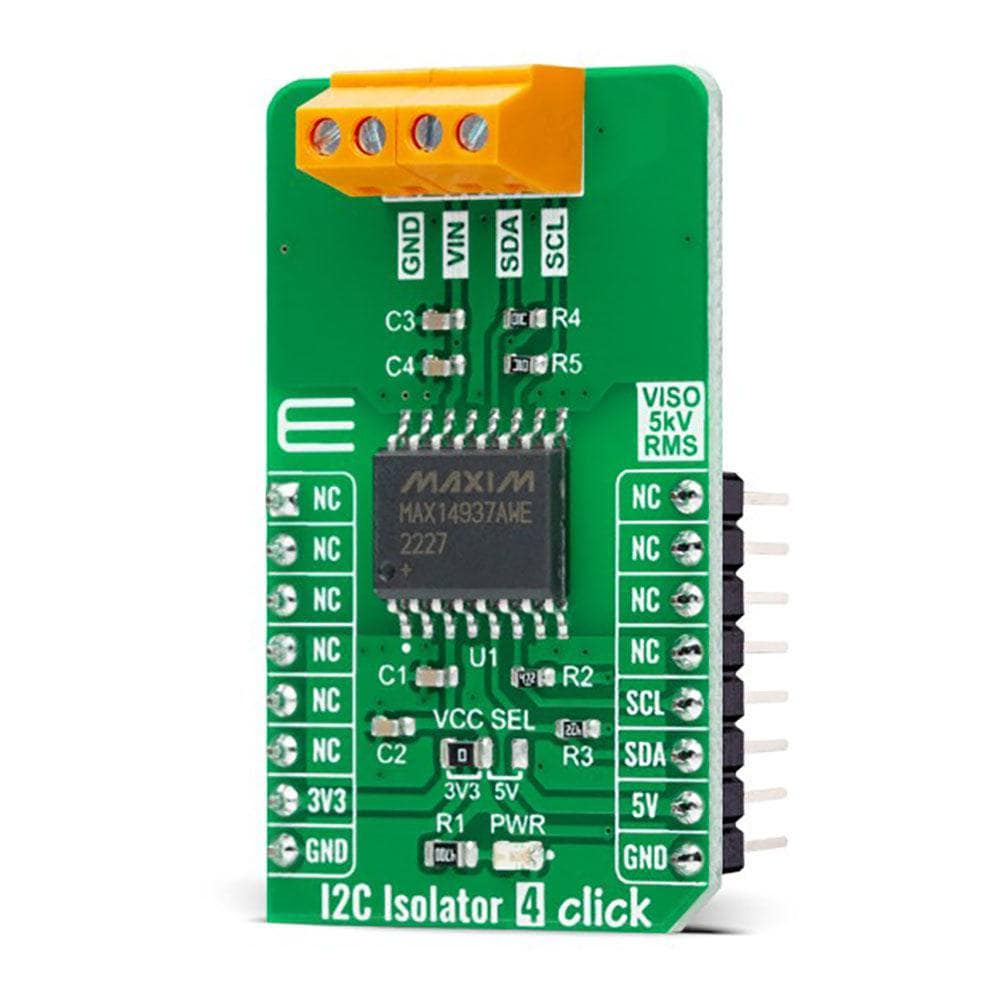
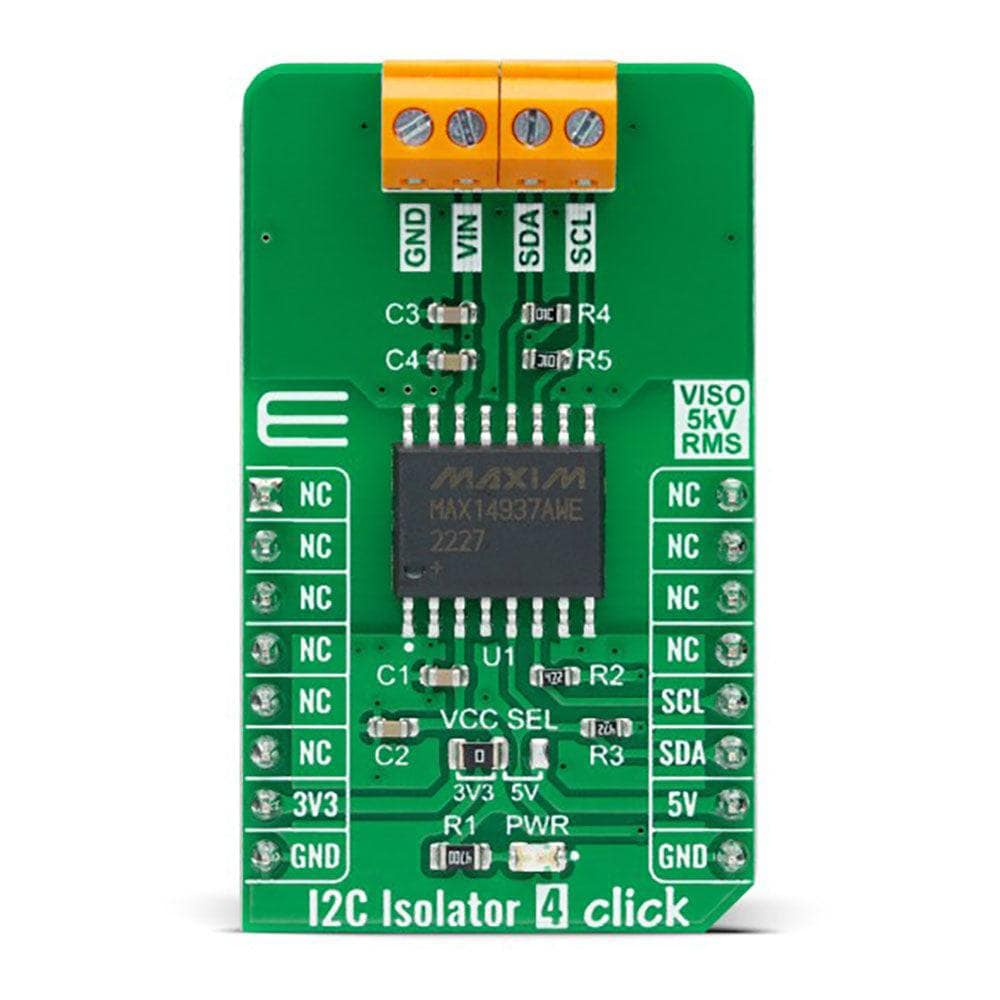

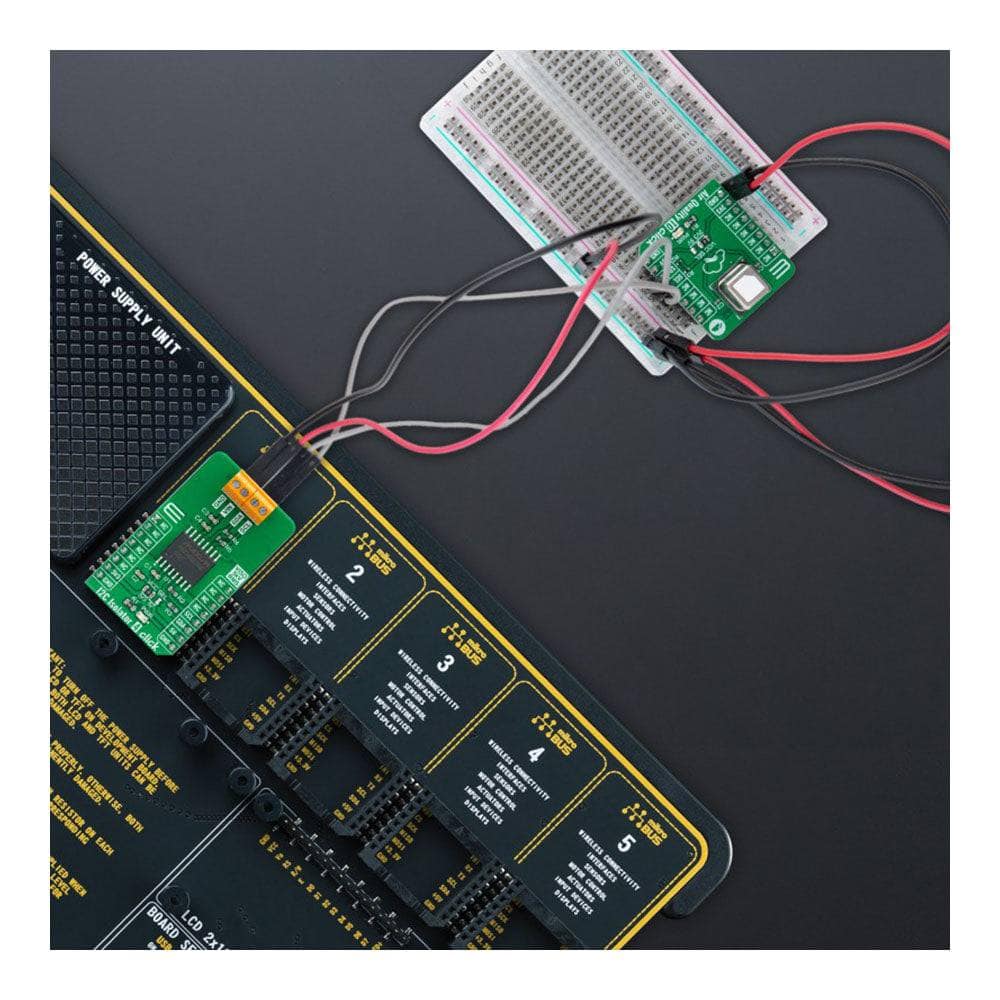
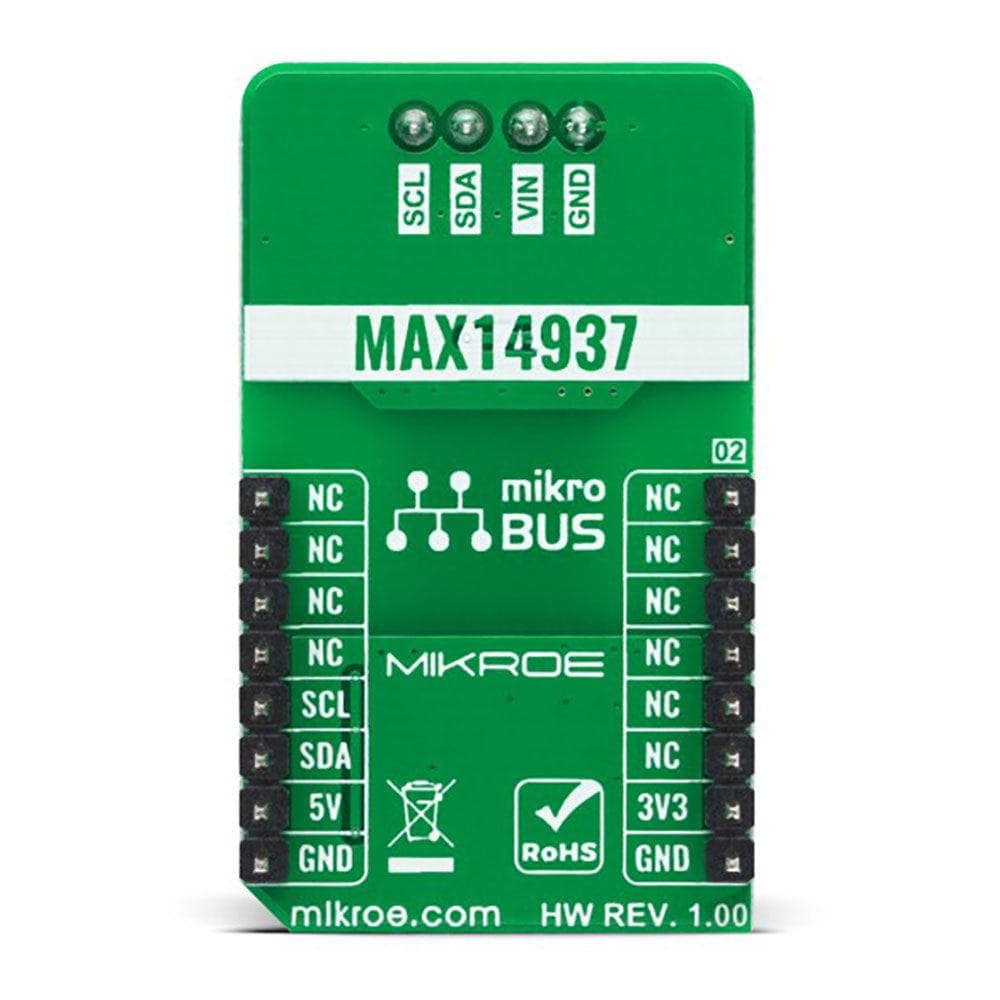
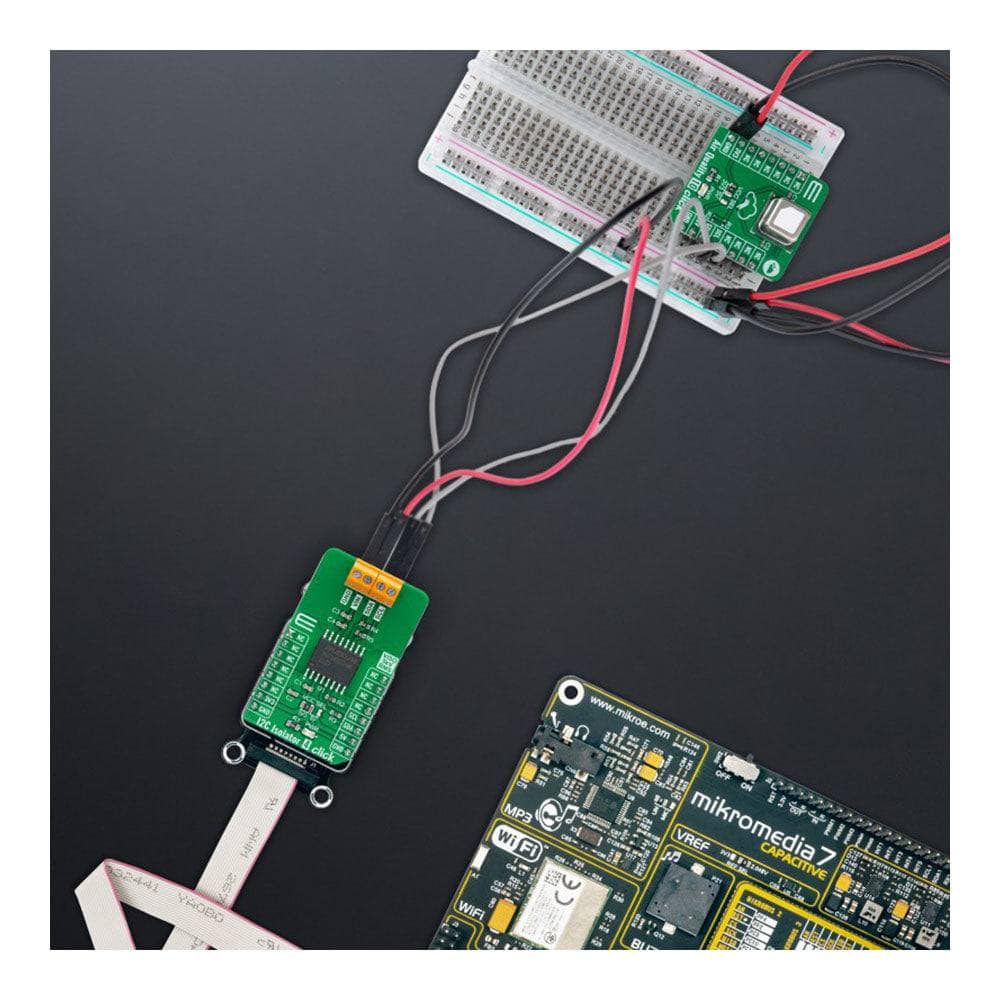
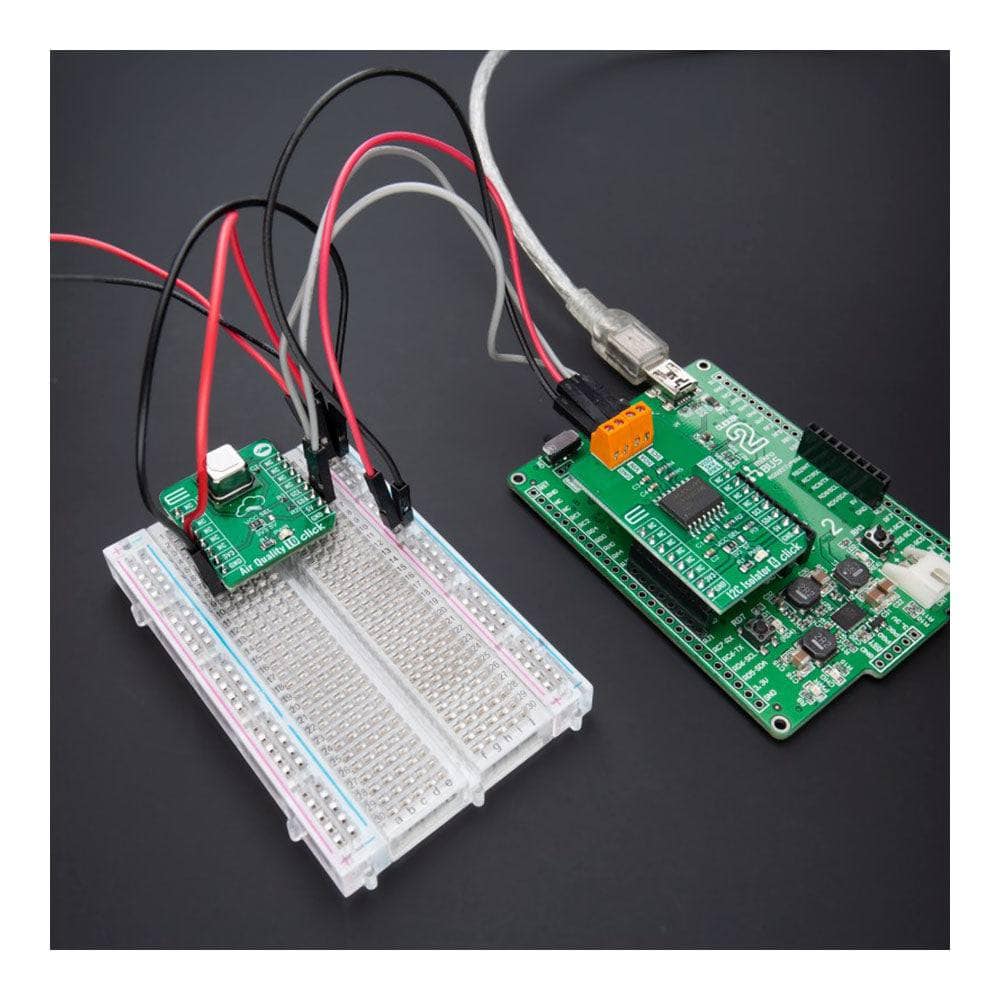
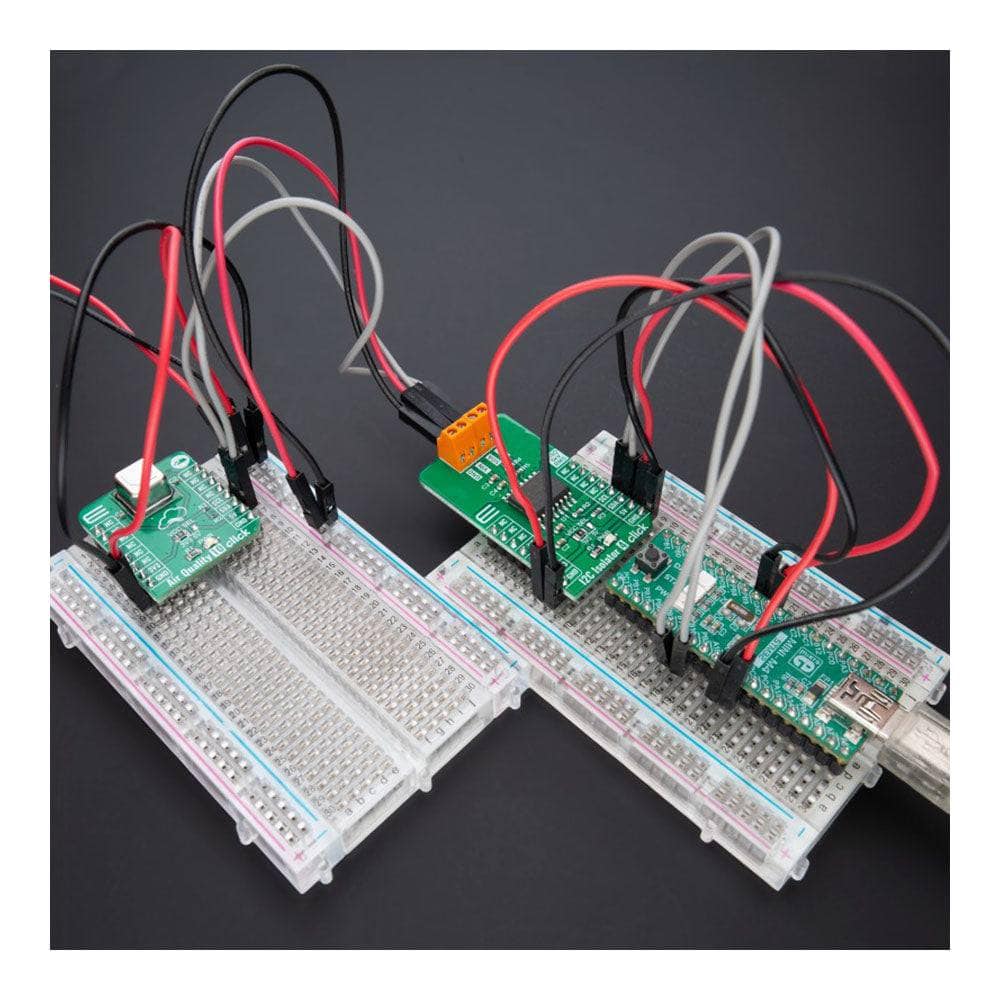
Key Features
Overview
The I2C Isolator 4 Click Board™ is a compact add-on board that offers completely isolated bidirectional communication. This board features the MAX14937, a two-channel, 5kVRMS I2C digital isolator from Analog Devices. The MAX14937 provides two bidirectional, open-drain channels for applications that require data to be transmitted in both directions on the same line. It supports data rates from DC up to 1.7MHz and can be used in isolated I2C busses with or without clock stretching. This Click board™ is suitable for transferring digital signals between circuits with different power domains at ambient temperatures.
The I2C Isolator 4 Click Board™ is supported by a mikroSDK-compliant library, which includes functions that simplify software development. This Click board™ comes as a fully tested product, ready to be used on a system equipped with the mikroBUS™ socket.
Downloads
Das I2C Isolator 4 Click Board™ ist eine kompakte Zusatzplatine, die vollständig isolierte bidirektionale Kommunikation bietet. Diese Platine verfügt über den MAX14937, einen zweikanaligen 5kVRMS I2C-Digitalisolator von Analog Devices. Der MAX14937 bietet zwei bidirektionale Open-Drain-Kanäle für Anwendungen, bei denen Daten in beide Richtungen auf derselben Leitung übertragen werden müssen. Es unterstützt Datenraten von DC bis zu 1,7 MHz und kann in isolierten I2C-Bussen mit oder ohne Taktdehnung verwendet werden. Dieses Click Board™ eignet sich für die Übertragung digitaler Signale zwischen Schaltkreisen mit unterschiedlichen Leistungsbereichen bei Umgebungstemperaturen.
Das I2C Isolator 4 Click Board™ wird von einer mikroSDK-kompatiblen Bibliothek unterstützt, die Funktionen enthält, die die Softwareentwicklung vereinfachen. Dieses Click Board™ wird als vollständig getestetes Produkt geliefert und ist bereit für den Einsatz auf einem System, das mit der mikroBUS™-Buchse ausgestattet ist.
| General Information | |
|---|---|
Part Number (SKU) |
MIKROE-4675
|
Manufacturer |
|
| Physical and Mechanical | |
Weight |
0.02 kg
|
| Other | |
Country of Origin |
|
HS Code Customs Tariff code
|
|
EAN |
8606027386596
|
Warranty |
|
Frequently Asked Questions
Have a Question?
Be the first to ask a question about this.








